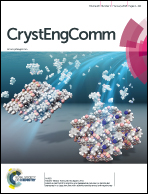Effect of deposition pressure on the structural and optical properties of Ga2O3 films obtained by thermal post-crystallization
Abstract
β-Ga2O3 films have been obtained by thermal annealing of amorphous thin films that were deposited by radio frequency magnetron sputtering. The influence of deposition pressure on the properties of the β-Ga2O3 films was investigated. The structural and optical properties of the β-Ga2O3 films were evaluated using X-ray diffraction, X-ray photoelectron spectroscopy, scanning electron microscopy and optical spectrophotometric measurements. The full width at half maximum of β-Ga2O3 (600) X-ray diffraction peaks decreased firstly and then increased with increasing deposition pressure. A similar variation tendency was observed for the optical band gap of the β-Ga2O3 films. The reasons were attributed to joint action of the atoms' diffusion ability on the surface and oxygen partial pressure with deposition pressure. With increasing pressure, sputtered target species collided more and lacked energy to diffuse leading to poorly crystallized films. With high deposition pressure, oxygen partial pressure also increased in the deposition chamber, thus crystalline quality was improved due to the decrease in oxygen vacancies in the film, which was confirmed by investigating O 1s and Ga 3d core levels using X-ray photoelectron spectroscopy.



 Please wait while we load your content...
Please wait while we load your content...